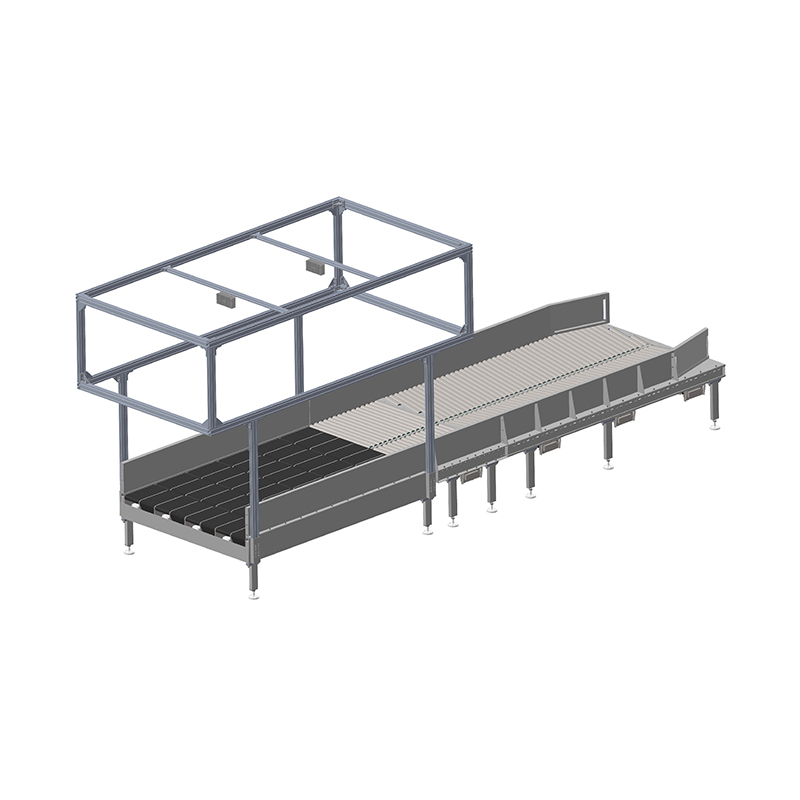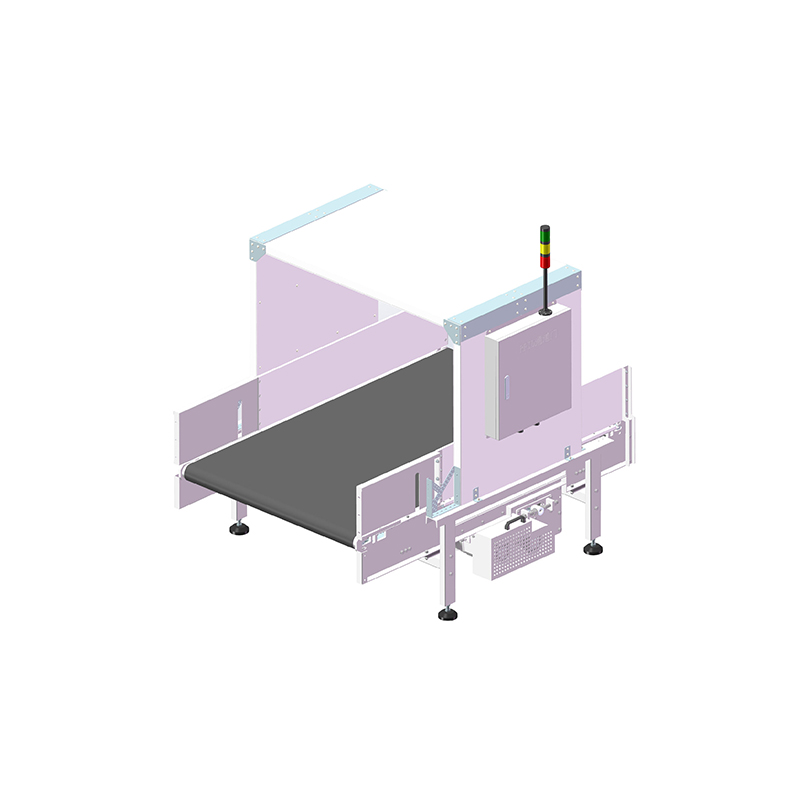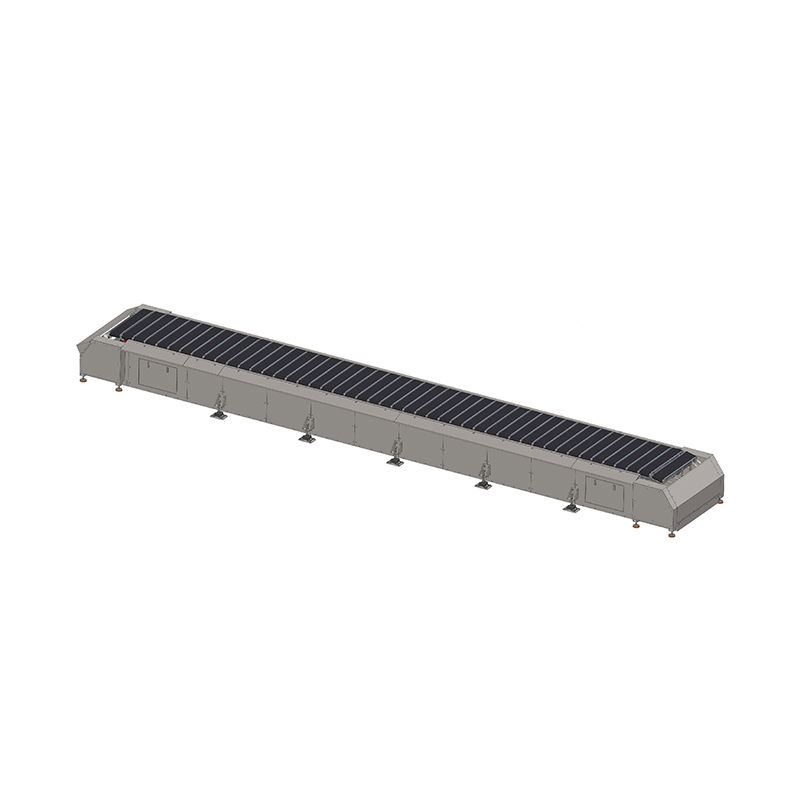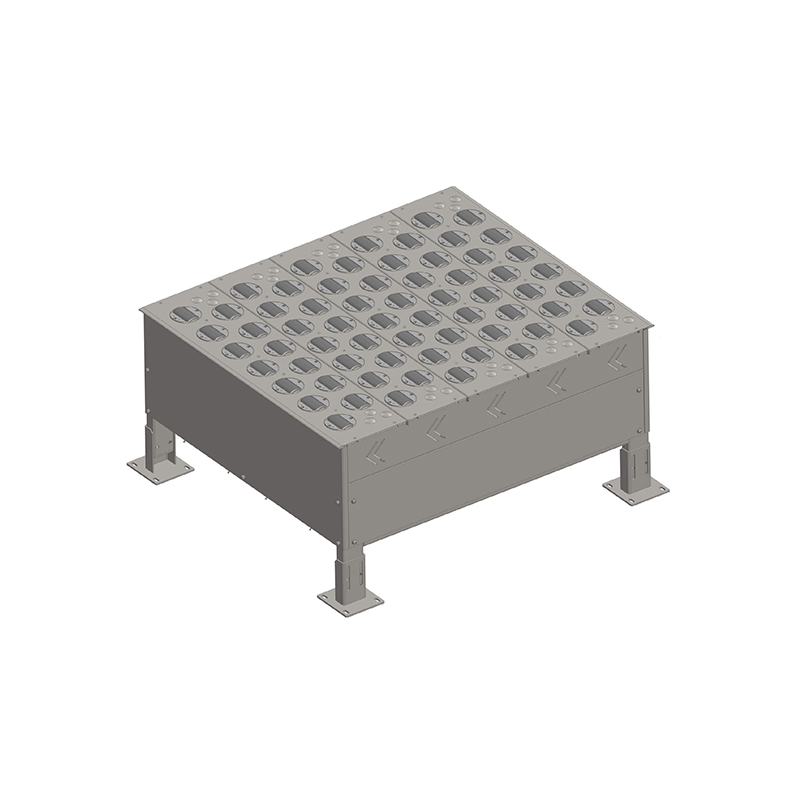Intelligent system solution for automated equipment in logistics sorting centers
Release Time : 2025-07-28
I. Introduction
With the rapid development of e-commerce, the logistics industry has ushered in unprecedented opportunities and challenges. As a key link in logistics distribution, the efficiency and service quality of logistics sorting centers directly affect the operation of the entire logistics supply chain. Traditional logistics sorting methods mainly rely on manual operations, which have problems such as low efficiency, high error rate, and high labor intensity, making it difficult to meet the growing logistics needs. The introduction of automated equipment has brought changes to logistics sorting centers, and the application of intelligent systems has further improved the performance and efficiency of automated equipment, realizing the intelligent, efficient and precise logistics sorting.
II. Challenges faced by logistics sorting centers
2.1 Substantial increase in order volume
The popularity of e-commerce has made consumers' shopping behavior more frequent, and the volume of logistics orders has shown explosive growth. Logistics sorting centers need to process a large number of packages within a limited time, which places extremely high demands on sorting efficiency and accuracy.
2.2 Increased package diversity
The variety of goods purchased by consumers is becoming increasingly rich, and the size, shape, weight and material of packages vary. This has brought challenges to the compatibility and adaptability of sorting equipment. Traditional sorting methods are difficult to meet diverse sorting needs.
2.3 Cost control pressure
The logistics industry is highly competitive. Enterprises need to reduce operating costs while ensuring service quality. The introduction of automated equipment and intelligent systems requires a large amount of capital investment. How to effectively control costs while improving efficiency is an important issue facing logistics sorting centers.
2.4 High requirements for real-time and accuracy
Logistics distribution has extremely high requirements for timeliness. Consumers hope to receive the purchased goods as soon as possible. At the same time, errors in the sorting process can lead to problems such as wrong or missed parcels, affecting customer experience and corporate reputation. Therefore, logistics sorting centers need to achieve real-time and accurate sorting operations.
III. Intelligent system architecture and functions
3.1 Intelligent system architecture
The intelligent system of the automation equipment of the logistics sorting center is mainly composed of data acquisition layer, data processing layer, control execution layer and user interface layer.
Data acquisition layer: responsible for collecting various information of the package, such as barcode, QR code, weight, size, etc. Commonly used data acquisition equipment includes barcode scanners, cameras, weighing sensors, etc.
Data processing layer: Process and analyze the collected data to identify the destination, sorting priority and other information of the package. Use advanced image recognition, data mining and machine learning algorithms to improve the accuracy and efficiency of data processing.
Control execution layer: According to the results of the data processing layer, control the automation equipment to complete the sorting, transportation and storage of the package. Including conveyor belts, sorting machines, robots and other equipment, through programmable logic controllers (PLC) and distributed control systems (DCS) to achieve precise control of the equipment.
User interface layer: Provide users with operation and monitoring interfaces to facilitate managers to understand the operating status of the sorting center in real time, and perform equipment parameter settings, task scheduling and fault handling.
3.2 Intelligent system functions
3.2.1 Intelligent identification function
Use image recognition technology and barcode/QR code scanning technology to quickly and accurately identify the appearance, logo and other information of the package. It can identify packages of different types and materials to improve the accuracy and efficiency of sorting. At the same time, through comparison with the database, accurate judgment of the destination of the package can be achieved.
3.2.2 Automatic sorting control function
According to the intelligent recognition results, the sorting equipment is automatically controlled to sort the parcels to the corresponding conveying lines or storage areas. The advanced path planning algorithm is used to optimize the sorting path of the parcel, reduce the dwell time of the parcel in the sorting process, and improve the sorting efficiency. At the same time, it can dynamically adjust the operating parameters of the sorting equipment according to the priority of the sorting task to ensure that important parcels are sorted first.
3.2.3 Equipment status monitoring and fault warning function
Real-time monitoring of the operating status of the automation equipment, such as the speed of the conveyor belt, the torque of the sorting machine, the joint position of the robot, etc. Through sensors and data analysis technology, the operating parameters of the equipment are analyzed in real time. When the equipment is found to be abnormal, a warning signal is issued in time, and fault diagnosis and suggestions are provided to help maintenance personnel quickly troubleshoot and reduce equipment downtime.
3.2.4 Data analysis and decision support function
Collect and analyze data in the sorting process, such as sorting efficiency, error rate, equipment utilization, etc. Through data mining and visualization technology, various reports and charts are generated to provide decision support for managers. According to the data analysis results, the sorting process is optimized, the equipment layout is adjusted, and the personnel are arranged reasonably to improve the overall operational efficiency of the logistics sorting center.
IV. Practical application cases
4.1 A large e-commerce logistics sorting center
After the introduction of the intelligent system, the logistics sorting center has realized the automatic identification and sorting of packages. Through high-definition cameras and image recognition algorithms, the barcodes and QR codes on the packages can be quickly and accurately identified, and the recognition accuracy rate has reached more than 99%. At the same time, the use of advanced sorting machines and control algorithms has achieved high-speed sorting of packages, and the sorting efficiency has increased by more than 3 times compared with traditional methods. In addition, the intelligent system also realizes real-time monitoring and fault warning of equipment status, and the equipment failure rate has been reduced by 50%, and the maintenance cost has been significantly reduced.
4.2 Regional distribution center of a courier company
After the distribution center applied the intelligent system, the sorting process was optimized. Through the data analysis function, it was found that some sorting routes were congested, the layout of the sorting equipment was adjusted, the number of sorting routes was increased, and the diversion strategy of packages was optimized. After the adjustment, the throughput of the sorting center increased by 20%, and the average sorting time of the parcels was shortened by 30%. At the same time, the application of the intelligent system also improved the accuracy of sorting, and the error rate was reduced to below 0.1%, which effectively improved customer satisfaction.
V. Benefits brought by the intelligent system
5.1 Improve sorting efficiency
The intelligent system realizes the rapid identification and automatic sorting of parcels, reduces the time and error of manual operation, and greatly improves the sorting efficiency. It can meet the large-scale and efficient sorting needs of the logistics sorting center, shorten the sorting time of parcels, and speed up the logistics distribution.
5.2 Reduce the error rate
Through advanced recognition technology and precise control algorithms, the intelligent system can accurately identify the information of the parcel and sort the parcel to the correct location, effectively reducing the error rate in the sorting process. It reduces the problems of wrong delivery and missing delivery of parcels, improves customer satisfaction, and reduces the compensation cost of the enterprise.
5.3 Reduce operating costs
The application of the intelligent system realizes the automatic operation of the equipment and real-time monitoring of the status, reduces manual intervention, and reduces labor costs. At the same time, through fault warning and preventive maintenance, the equipment downtime is reduced and the maintenance cost is reduced. In addition, the sorting process and equipment layout are optimized, the utilization rate of the equipment is improved, and the operating cost is further reduced.
5.4 Improve management level
The intelligent system provides rich data analysis and decision support functions. Managers can understand the operating status of the sorting center in real time through the user interface, conduct data analysis and decision making. According to the data analysis results, the sorting process is optimized, the equipment parameters are adjusted, and the personnel are arranged reasonably, which improves the overall management level of the logistics sorting center.
VI. Future development trend
6.1 Deep integration with the Internet of Things
In the future, the intelligent system of the logistics sorting center will be deeply integrated with the Internet of Things technology to achieve interconnection and real-time sharing of data between devices. Through the Internet of Things sensors, the location, status and other information of the package can be obtained in real time to achieve more accurate sorting and distribution. At the same time, the Internet of Things technology can also realize remote monitoring and control of equipment and improve the management efficiency of equipment.
6.2 Wide application of artificial intelligence
Artificial intelligence technology will be more widely used in the intelligent system of the logistics sorting center. For example, using deep learning algorithms for image recognition and data analysis can improve the accuracy of recognition and the efficiency of data analysis; using reinforcement learning algorithms to optimize sorting paths and equipment scheduling can further improve sorting efficiency.
6.3 Green Sustainable Development
With the increase of environmental awareness, the intelligent system of the logistics sorting center will pay more attention to green sustainable development. Use energy-saving automation equipment, optimize the operating parameters of the equipment, and reduce energy consumption. At the same time, through the management of intelligent systems, reduce the use of packaging materials, and realize the greening of logistics sorting.
The intelligent system solution of the automation equipment of the logistics sorting center is an effective way to meet the challenges of the logistics industry. Through the application of intelligent systems, the fast and accurate sorting of parcels is achieved, the sorting efficiency is improved, the error rate and operating costs are reduced, and the management level of the logistics sorting center is improved. In the future, with the continuous development of technologies such as the Internet of Things and artificial intelligence, the intelligent system of the logistics sorting center will continue to improve and innovate, providing stronger support for the development of the logistics industry. Logistics companies should actively introduce and apply intelligent systems to enhance their competitiveness and adapt to the development needs of the market.








